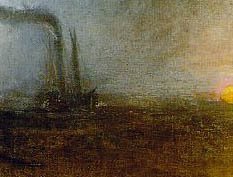Lucky accidents

All the money in the world cannot buy you an accident.
Most especially watercolour, but, in fact, all painting, all art, thrives on what we refer to as lucky accidents, and we admire those artists who have the uncanny ability to have this kind of accident, wondering how it came that they had this seemingly unfair gift.
Turner is the great magician of paint, capable of surfaces that challenge nature in its beauty. Delacroix delights in loose splashes of paint which bring a sense of energy and natural freedom to his work. The passionate brushwork of Rembrandt reveals the very power of his character.
This energy is most desirable in art. Without it pictures can look sterile and passionless, and most of us are eager to have this quality of accidental, transcendent beauty, but the question is, how? How do we achieve that which can only happen when we don't try to make it happen?
"Accidentally on purpose" does not cut it. It is no more than a way of faking spontaneity, and nothing can be less spontaneous than calculated falsehood.
The fact is: accidents happen all the time, and to everybody. The "spontaneous artist" is simply a person who delights in whatever nature or chance or fate brings his way. He is a person who instinctively believes that the universe is a system of good, a system of goodwill, of love. That fate conspires at every second and in every way for our happiness and our best interest.
He welcomes every chance meeting, every new path, every coincidence of word, and every disaster that befalls his work. Chaos theory postulates that chance, happenstance, luck, accident and mistake is essential for the very existence of life, and even of creation.
The main thing that sets them apart is that they believe that there is no such thing as an "unlucky accident" and no such thing as "bad luck". Evil exists, yes, but it is the product of the will of man, not of the play of the gods. So he is happy to accept every accident of splash and streak and smear and scratch as being lucky. After learning this great truth, his touch becomes lighter, his grip on his brush looser, impasto broader, his paint mixtures fuller and more generous, and his mind more open to new thought. Accidents come more easily, and are welcomed more delightedly. Many artists, particularly in watercolour, enjoy splashing pigment onto their work, collaborating with chance.
Of course, terrible things do happen to us, and it would be shallow to pass these off as mere good luck, misunderstood. The workings of chance and fate need to be assimilated by us and then worked and molded until our life is enriched by them. Somewhat like being washed ashore on a desert island, the chance event, the accident, is just a starting point, but a glorious one.
We can all learn the habit of delight, of open joy, and there is no better place to learn it than on the safe and welcoming battleground of our canvas, where mistakes can never cause any hurt.
Ryno.

